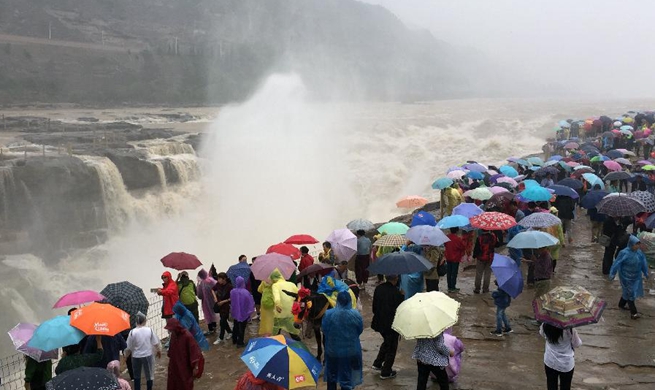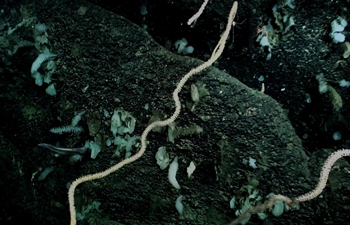BEIJING, May 19 (Xinhua) -- China is waging a tough war against pollution to make new progress in the building of an ecological civilization, according to a tone-setting environmental meeting that ended Saturday.
The following are some facts and figures about China's targets and plans regarding ecological and environmental protection, and what has been done so far:
-- By 2035, China wants to make a fundamental improvement to the environment, and the goal of building a Beautiful China will be basically attained.
-- On Jan. 1, 2018, China introduced a new tax -- the environmental protection tax -- aimed at protecting the environment and cutting pollutant discharge. Over 260,000 enterprises and other entities started paying the tax in April.
-- As part of a massive cabinet reshuffle plan, China established the new Ministry of Ecology and Environment to take charge of the protection of fresh water, land, air and oceans, and the Ministry of Natural Resources responsible for making overall planning and overseeing the development and protection of natural resources.
-- China aims for a drop of at least 3 percent in energy consumption per unit of GDP in 2018. The country's total energy consumption will be capped at 5 billion tonnes of coal equivalent by 2020, which will translate into a 15-percent reduction of energy use per unit of GDP.
-- China will also cut sulfur dioxide and nitrogen oxide emissions by 3 percent, as well as chemical oxygen demand and ammonia nitrogen emissions by 2 percent in 2018, according to this year's government work report.
-- The country launched a national action plan on air pollution in 2013 and has so far achieved the desired results. The average density of PM 10 in major Chinese cities went down 22.7 percent in 2017 from the 2013 level, while PM 2.5, a key indicator of air pollution, fell by 39.6 percent from the 2013 level in Beijing and surrounding provincial areas in 2017.
-- Chinese authorities are drawing ecological "red lines" to strengthen environmental protection in certain zones. The zones will be clearly defined nationwide by the end of 2020, according to government guidelines.
-- China's desertified land has shrunk by 150 million mu (10 million hectares) since 2012, while up to 508 million mu of forests have been planted, bringing the national forest coverage to 21.66 percent. This year, more than 100 million mu of land will be afforested.
-- Across the country, river chiefs, bay chiefs, and lake chiefs are taking their posts to protect water resources. There are now around 200,000 river chiefs at provincial, city, county, and township levels in China, and the country aims to roll out the river chief mechanism nationwide by 2018.
-- China is setting up a national park system and has piloted 10 national parks across the country to protect the natural environment and endangered species. The first national park will be built in the Sanjiangyuan area and will open in 2020 to protect the headwaters of the Yangtze, Yellow and Lancang (Mekong) rivers.

















